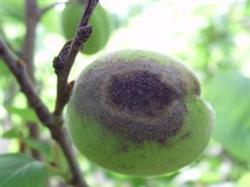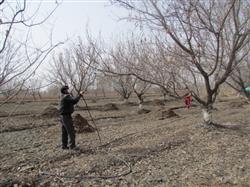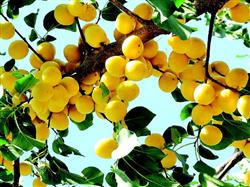The management of apricot trees after fruit picking should keep up

After shaping and pruning and picking fruit, the young and prosperous branches are angled, and the new shoots continue to be coring for the second time. In addition, it is necessary to cut off the disease and insect branches, cross branches, thin and weak branches and long branches in the crown to reduce the nutrient consumption of the tree. Timely spraying should be used to control diseases and pests after harvest. Mainly against diamondback moths, crustaceans, heart-eating insects and red-necked longicorn beetles. When it is found that apricot disease occurs on the leaves, it should be cut off in time, and fungicides should be sprayed if necessary. Water and fertilizer management applied nitrogen, phosphorus and potassium compound fertilizer once after fruit harvest. Combined with spraying fertilizer for foliar spraying, 0.3% potassium dihydrogen phosphate + 0.2% urea mixture was sprayed to increase the nutrient accumulation of the tree. After deep ploughing and soil improvement, apricot fruits should be ploughed in the whole garden, combined with fertilization. Through deep ploughing, the soil structure can be improved, the root growth can be promoted, the cold resistance can be improved, and the overwintering base of pests can be reduced.
- Prev

Winter pruning of apricot trees
As the saying goes, "apricot trees do not harvest in ten years and nine years", in addition to the low fruit setting rate, it is mainly due to the great decrease in the ability of apricot sprouting and flowering to resist low temperature, which is less than-3.9 in bud stage, less than-2.2 in florescence, less than-0.6 in young fruit stage and more than 30 minutes in low temperature period. Freezing injury is easy to occur. So...
- Next

Transformation of low-yield apricot orchard
The characteristics of low-yield gardens include low-yield young tree orchards and low-yield old tree orchards. The apricot orchard whose output is lower than the average yield of this area year after year, or lower than the output of similar orchards around it, is a low-yield orchard. The main results are as follows: 1. In the young tree orchard in full fruit period, the tree potential is weak, the crown is small, the expansion is slow, the branch quantity of the extended branch is small, and the fruiting branch.
Related
- Moge, come on! The staff of the peasant association in the producing area of cantaloupe were frightened when the crowd gathered.
- Causes and Solutions of low Fruit setting rate of Apple
- Symptoms and control measures of passion fruit virus disease
- Fruit growing lesson: how do apple orchards keep high yields?
- Can you build orchards in the mountains? What are the pros and cons?
- How to manage the coloring period of Crisson grape?
- This paper introduces the processing technology of two kinds of fig products.
- How much is a month for retired teachers in rural areas by 2020?
- How can strawberry planting increase sugar content? We should pay attention to management in many aspects.
- What are the cultivation techniques on how to improve the yield of golden fruit?

